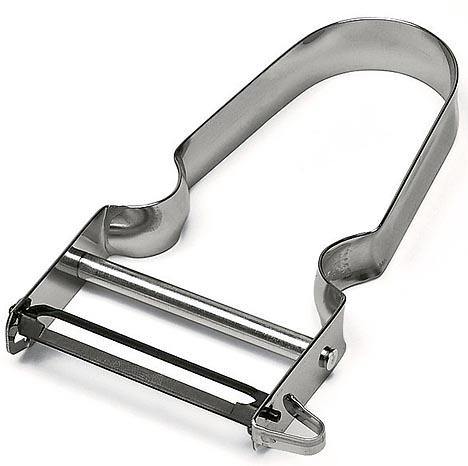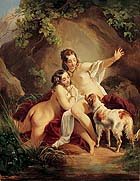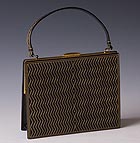
translated and summarized by: Liz Wollner-Grandville,
English summary October 12 - 18
WAGNER-WERK Museum Postsparkasse der BAWAG P.S.K.: MAIN STEET – Design without Designers
Between mould and drawer
Design can be a punishment. Designer toothbrushes mould in their designer retainers, which unfortunately do not have any drainage. Soup dribbles off a spoon: the users hand finds no hold on its handle. And the lemon’s juice as well as its kernels drivels into a glass, because the designer did not consider it necessary to separate them. There are numerous cases such as these - and either one endures their shortcomings or one reaches to more functional objects.
But it would be unfair to discredit the discipline of design in its entirety. The list of classic designer goods, whose formal design outlasted decades, is long. And then there are those that catch one’s eye: those “anonymous” objects, that at some point took shape simply because they proved to be reliable.
The exhibition at the WAGNER:WERK Museum Postsparkasse takes a closer look at these objects. The Cinderellas in the bathroom, kitchen and living room – the clothespin, the potato peeler, the Viennese coffee shop cup or the Tupperware box. The amusing and instructive compilation whets one’s appetite to take a close look and questioning those objects that shape everyday routines – and thereby also the awareness of the changing mechanism of usage and criteria for good design. This can even affect icons, such as the famous Thonet chair Nr. 14, designed in 1859 and reproduced 20 million times, exported in space-saving individual parts to many different countries. Even the hardcore dogmatists such as Le Corbusier used this timeless classic. But frankly speaking: Nr. 14 is extremely uncomfortable.
By Iris Meder
WAGNER:WERK Museum Postsparkasse der BAWAG P.S.K.
1018 Vienna, Gerog-Coch-Platz 2, until 14.11.2009
www.ottowagner.com
Residenzgalerie Salzburg: Bathing Scenes – Ritual, Indignation and Seduction
The element of water and the naked body
At the beginning of the exhibition, which is arranged in chronological order from antiquity to the present, you will be confronted with rubber ducks and a floating tire, in the form of an inflatable shark.
Smiling, you proceed to more serious topics such as the Roman bathing culture. They knew how to spend a relaxing day: enjoying the thermal baths, their libraries, steam baths, massages and gymnastics. In the beauty departments, faces and bodies were rubbed with ointments and essences.
Mythological and biblical scenes let the voyeur in the painting, and the observer viewing the painting become one, even if their points of view don’t coincide. The biblical “Susanna in the bath”, the Greek goddess of the hunt with her companions - all being watched while grooming and considering themselves unobserved, lasciviously showing their beautiful bodies – a socially recognized way to depict female nudity.
Many were shocked by Albrecht Dürer’s “Men’s Bath” - not because the naked men were bathing but because the pursued things like playing music. Today, this would be an unimaginable reason to cause scandal.
The sign next to Hermann Grom-Rottmayer’s poster “Centralbad 1904/12” discloses the history of this notorious venue at Vienna’s Weihburggasse. The history of the “Kaiserbründl” can be followed back to the days of the Romans. The topic of the poster is an “open insinuation”: two men in the “floods” of a water basin. Over the years, the name changed, but the purpose of the venue remained remarkably perpetual.
In the last room, the lovingly designed bathrooms in doll houses dating back to the 1900’s, including all kinds of details such as a hot-water heater and water pipes.
Finally, Oberhuber, Herzig, Stangl. Brauneis, and Co., with their interpretations on the topic and videos created by pupils at the polytechnic schools.
By Maria-Gabriela Martinkowic
Residenzgalerie Salzburg
5010 Salzburg, Residenzplatz 1, until 01.11.09
www.residenzgalerie.at
National Museum Krakow: Always at Hand – Handbags from the Middle Ages to the Present
Beautiful, loyal companion
The handbag – a receptacle for diverse items – has become the most important, indispensable accessory in women’s fashion. Long gone are the days when the necessary things were hidden under a skirt, something done during the Middle Ages until the Baroque. Today, bag enthusiasts seem to even oust shoe fetishists. And even these objects of desire are topics of discussion and research of today’s medicine and, in some cases, are considered just as harmful as high-heels. Since the 1980’s, every season fashion designers try to position their ever-new creations as the top-favourites among the fashionistas. Even museums have started to research the meaning of these accessories and to present them in special exhibitions.
The National Museum in Krakow is currently presenting handbags from the Middle Ages to the 1970’s, mainly from Polish collections. Almost 200 pieces are shown in all their stylistic diversity and in an artful arrangement – an urban landscape with an elegant avenue, with shops and female window mannequins.
Diverse forms and styles of bags, pouches, purses, and knapsacks are shown in their varying functions, adapted to the socio-political transition and social behaviour patterns and divided chronologically into numerous groups. At first, bags had an everyday-function or served travel purposes, but the situation changed in the 20th century. The bags began to reflect the personality of their owners. In the 18th century, ladies wore the pouches, which held their embroidery and needlework, around their necks as a proof of their diligence. And the so-called Réticule, named after the mistress of French King Louis XV, (who was also referred to as Pompadour), was the first modern bag. From that day on, the forms and material used for handbags changed rapidly: black ball bags, fashionable silver pouches, the first leather- and synthetic bags of the 20’s, convenient hanging bags of the 30’s, flower-power bags of the hippie movement, bags belonging to working women; among them the small leather bag belonging to the current museum director, Zofia Golubiew. In the Interwar-period, the Art Decó envelope bags took on the geometrical forms and colours of the applied arts.
The splendour and opulence of the bags attest to the social status of their owners. Luxurious bags made of pearls, peacock feathers, glitter and valuable stones, even cucumber seeds, are among the most valuable consumer good objects. And it is the women and their insatiable lust for beauty, which transformed plain male “money bags” into individual pieces of art and thereby a practical object. Today, one can only dream of the former variety and remarkably elegant simplicity of handbags – and make a pilgrimage to Krakow.
By Goschka Gawlik
National Museum Krakow
Krakow 1, 3 Maja Av., until 08.10.09
www.muzeum.krakow.pl
Mehr Texte von translated and summarized by: Liz Wollner-Grandville


 Teilen
Teilen




